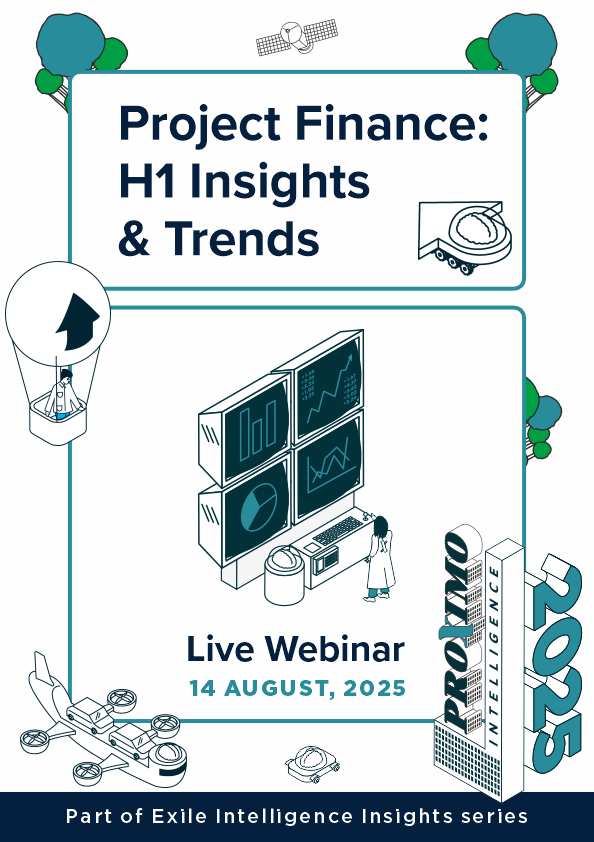Market integrity and standardisation: shaping the rules of the voluntary carbon market
As the voluntary carbon market rapidly evolves, it is attracting further scrutiny and questions surrounding governance and quality control. By Nicholas Neuberger, Partner, and Adam Waszkiewicz, Senior Associate, at Bracewell (UK) LLP.

Investments in carbon credits are now substantial. It is estimated that in 2023, over 300 million carbon credits were issued, with the voluntary carbon market (VCM) valued at approximately $2 billion. Commercial banks have set up trading desks dedicated to the financing of VCM projects and trading of carbon credits. Corporations, consumers and governments are purchasing carbon credits from over 25,000 projects.
The integrity of the VCM is therefore vital to the next steps in its development. Robust standards will be of critical importance.
The VCM is decentralised, in that it does not have an overarching regulator with a detailed set of rules to which every market participant must adhere. However, a growing number of quasi-regulatory bodies and procedures are emerging that are shaping the market.
We explore below some of the central bodies that have emerged in this growing market – and what they are seeking to achieve.
Key bodies
Carbon credit registries (such as Gold Standard, Puro.earth and Verra) play a crucial role in the functioning of carbon markets by providing a trusted platform for tracking and monitoring carbon credits, promoting integrity and supporting the transition to a low-carbon economy. Carbon credits must be issued on a registry. The registries provide a centralised database that track the ownership, issuance, transfer and retirement of carbon credits or carbon offsets. They serve as a transparent platform for recording and managing information relating to carbon credits, with the aim of ensuring the integrity of such carbon credits. Each registry has its own eligibility criteria and standards for the credit issuers and the trading and retirement of the credits. These rules broadly overlap.
The VCM has also seen the emergence of various quasi-regulatory bodies and leaders in best practice, including the Voluntary Carbon Market Initiative (the “VCMI”), the Integrity Council for the Voluntary Carbon Market (the “ICVCM”) and the International Emissions Trading Association (the “IETA”) to name a few of the key contributors.
We set out below the functions of these and other bodies that contribute to the governance of the VCM. Each of these bodies is seeking to play a crucial role in advancing the integrity and effectiveness of the VCM.
We note that this is far from a comprehensive overview of all key bodies in the VCM. Numerous other bodies exist that provide key guidelines and focus on bolstering the integrity of the VCM. For example, the International Carbon Reduction and Offset Alliance (“ICROA”) has a significant presence in the market and provides a procedure to assess the rigour, good governance and transparency of the registries themselves as well as an accreditation programme to certify best practice for service providers in the VCM requiring an ongoing annual independent audit to confirm compliance.
These bodies complement each other and share the common goal of solidifying the integrity of the VCM.
Purpose of key bodies
Registries
The core function of the registries is to set standards and platform public registries that provide traceability of the carbon credits from generation to sale to retirement. Enhanced monitoring and reporting is key to the promotion of transparency and accountability of the VCM projects. The leading registries also provide detailed methodologies setting out the criteria that need to be fulfilled by VCM applicants.
Carbon credit registries have developed (and continue to develop) standards and methodologies in evaluating and certifying carbon projects. These standards provide a benchmark and criteria to evaluate the integrity and quality of carbon credit projects and their associated carbon credits.
Examples of these standards and frameworks include Verra’s “Verified Carbon Standard”, Gold Standard’s “Gold Standard for the Global Goals” and Puro’s “Puro Standard”. These standards provide guidelines and criteria for the development, implementation, and verification of carbon projects. The carbon credit registries undertake evaluation, monitoring and third-party verification of projects before applying their accreditation to a project and its associated carbon credits. Only once a project is certified can it issue certified carbon credits. We explore some of the key registry verification criteria further below.
VCMI
For oversight on the demand-side, the VCMI encourages transparency and accountability in the VCM by promoting public disclosure of relevant information regarding project methodologies, emission reductions, and the credit issuance processes.
The VCMI is a global initiative that aims to establish common standards, principles, and guidelines for the VCM. By defining clear rules and criteria for carbon offset projects and credits, the initiative seeks to enhance market integrity and trust among participants. This transparency seeks to enable stakeholders, including investors, consumers and regulators, to assess the environmental and social benefits of each relevant carbon offset project.
The VCMI launched its Claims Code of Practice (“CoP”) on 28 June 2023. The CoP provides companies that acquire carbon credits with instructions and essential procedures for utilising carbon credits in line with their climate pledges, along with guidelines for making public claims about their use. Adhering to the CoP and specifically the CoP foundational criteria, results in the issuance of a VCMI validation for the company in question. VCMI issues tiered accreditation reflecting the amount of high quality carbon credits purchased and retired by a company. As such, the CoP bolsters company’s announcements relating to carbon credit offsets purchased to achieve internal net zero targets. It also helps stakeholders assess the legitimacy of a company's efforts to reduce carbon emissions. The CoP accreditation provides a label that gives stakeholders confidence that a given carbon credit has achieved a minimum set of standards under the relevant CoP and that its related retirement led to a meaningful emission reduction.
The VCMI also employs a measurement, reporting and assurance criteria which establishes a framework for verifying that information for each VCMI claim is properly evaluated and supported by verifiable evidence.
ICVCM
For oversight on the supply-side, the ICVCM provides further detailed layers of standards to supplement those standards required of a VCM project under the relevant registry.
The ICVCM serves as an independent oversight body for the VCM. Its primary role is to develop and implement standards, guidelines and best practices for VCM projects. In July 2023 the ICVCM released its ‘core carbon principles’ (“CCPs”), with the aim of acting as a benchmark for high-integrity carbon credits. The principles include similar core principles as those of the CoP such as additionality, no double counting, permanence, and third-party validation plus requirements relating to the tracking, governance and social and environmental best practice.
The ICVCM has also introduced an assessment framework to evaluate whether carbon credits and carbon-crediting programs reach its threshold for quality and integrity. The aim of this assessment framework is to create a consistent benchmark across the VCM to drive alignment and encourage the development of high-quality carbon credits.
IETA
The IETA focuses on the transparency rules and accounting standards under Articles 5 and 6 of the Paris Agreement. IETA was instrumental in developing the Climate Action Data Trust, a free open-source global platform that connects, aggregates, and harmonises carbon credit data. The role of the trust is to support reporting and compliance standards to enable the transparent accounting of carbon credits globally.
Standards are also key to the sale mechanics of the carbon credits. In February 2023 IETA published a comprehensive set of standardised agreements for the sale and purchase of carbon credits. These documents comprise: (i) a primary sale agreement for a direct sale of carbon credits from a project owner to an initial buyer, and (ii) two forms of secondary market sale agreement. The introduction of a market standard for the key commercial parameters of such sale arrangements provides an invaluable reference point or base for negotiating and finalising carbon credit sales and is a further development in creating a VCM standard – in this case in respect of the sales of the underlying credits.
Addressing Market Risks and Challenges
There are various market risks and challenges associated with VCM that these bodies are working to mitigate – in particular: double-counting, additionality and permanence.
Double counting
An inherent risk in the VCM is that, in the absence of proper tracing and monitoring, a single carbon credit may be (claimed to be) retired multiple times by different parties. This process, known as double counting, ultimately undermines the foundation of carbon credits that each credit may only be retired once.
The core registries have guidelines and procedures in place to mitigate against double counting. This is aided by tracking systems with unique serial numbers being assigned to carbon credits and the provision of clear ownership details on the registry.
The CoP also requires each carbon credit to have a unique serial number or identifier. This, in theory, ensures that each credit is traceable and cannot be counted more than once. Under the CCPs, carbon-crediting programs must have provisions in place to prevent double registration of mitigation activities and double issuance of carbon credits.
Additionality
Additionality is a key concept for the efficient functioning of the VCM. Additionality requires that carbon credit projects must demonstrate that the emission reductions or the removals they generate are in addition to what would have occurred in a business-as-usual scenario. In other words, the emission reductions would not have occurred in the absence of the carbon credit revenues.
The core registries have strict additionality requirements that are often further elaborated upon under specific methodology requirements as well as being subject to independent third-party verification.
The CoP and CCPs both assess additionality. Under the CCPs, additionality is assessed by reviewing both (i) the overall likelihood of additionality based on financial viability, barriers for implementation, and market penetration rates for the type of mitigation activity and (ii) the rigor and thoroughness of the carbon-crediting program’s approach to assess additionality. Similarly, the CoP seeks to ensure carbon credits are issued as a tool to deliver climate mitigation that is additional to that already taking place within a project’s value chains.
Permanence
Carbon offset projects aim to ensure that the emission reductions or removals achieved are permanent over the long term.
The core registries include monitoring and compliance pathways to mitigate against permanence risks. Once a carbon credit is certified and listed, the underlying project is required to adhere to the methodologies associated with its registry certification over the life of the project. This applies to data collection, reporting and continued verification to ensure the integrity of carbon credits generated by the project. This typically involves regular monitoring of key parameters related to the project’s activities, such as energy usage, emissions levels, or carbon sequestration rates. In addition to self-monitoring by project developers, the registries also require periodic third-party verification to ensure the reliability of reported data.
Independent auditors assess project documentation, conduct site visits, and certify project performance against established criteria to confirm that emissions reductions or removals are being accurately quantified and reported.
Furthermore, some of the registries require ‘buffer pool’ commitments for certain VCM projects under which a proportion of carbon credits issued are set aside and reserved in an account as an insurance mechanism such that, if there is a reversal event, buffer credits can be drawn upon to compensate.
Under the CCPs, projects must meet permanence requirements based on the associated risk of carbon reversals. Because these risks vary by category, the ICVCM has tailored its permanence criteria and requirements as detailed in their assessment framework. The ICVCM further sets out rules that require compensation for reversals. For certain categories of projects (including biochar, enhanced weathering, and CCS with geological storage) where there is material risk of reversals, a 40-year minimum commitment to monitor, report, and compensate for avoidable reversals is required.
Engaging stakeholders
The VCMI actively engages with a wide range of stakeholders, including governments, businesses, NGOs, and market participants, to foster collaboration and consensus on key issues affecting the VCM. By facilitating dialogue and cooperation, the initiative aims to drive collective action towards market improvement.
In the development of the CoP and the CCPs, the ICVCM and the VCMI collaborated with other initiatives, organisations and project groups working in the fields of carbon markets and climate finance. By forming partnerships and alliances, these organisations were able to leverage resources, expertise, and networks to achieve common goals and objectives. These partnerships enhance stakeholder engagement by broadening participation and fostering collective action for the benefit of all participants.
Rating agencies
A recent addition to the VCM is the inception of carbon credit ratings agencies (such as BeZero and Sylvera). Such agencies provide an independent evaluation (on an ongoing basis) of the likelihood that a credit generated by a project is delivering on its claim of avoiding/removing one tonne of carbon dioxide (or equivalent).
Making accurate ratings of projects and offsets remains a challenging proposition and there is currently no absolute alignment on methodologies for evaluating carbon projects or a universally accepted definition of carbon credit quality. Notwithstanding this, the rating agencies are seeking to provide an unbiased, science-based and project-type-specific analysis of the risks associated with a carbon credit issued in respect of a particular project.
Conclusion
The VCM currently had a myriad of quasi-regulatory bodies and standards and parameters in force or development with increasing levels of sophistication.
The exponential growth of the VCM has led to this array of standards, bodies and rating agencies. Consolidation and/or alignment is expected. Whilst this is not an unusual feature of a young market, promoting greater inter-operability between such bodies and standards and removing inconsistencies is crucial to the development of the VCM.
Core overarching principles have been cemented into the market as well as detailed eligibility criteria through the various rules, standards and guidelines. These are being adapted and work together to provide systems for the monitoring and accountability of VCM participants whilst addressing some of the checks and balances demanded of a sophisticated market. We will watch with interest as to how these rules and standards develop and integrate.
The authors:







